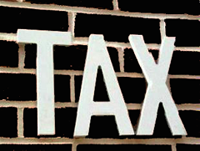 For calculating depreciation, one of the criteria to be considered is the actual cost of the asset. If you have a block of asset and a new asset has been purchased then actual cost of such new asset has to be added to the block for the purpose of calculating depreciation.
For calculating depreciation, one of the criteria to be considered is the actual cost of the asset. If you have a block of asset and a new asset has been purchased then actual cost of such new asset has to be added to the block for the purpose of calculating depreciation.
If the block to which this new asset belongs does not exist at the time of buying then in such cases depreciation will be calculated based on the actual cost.
Included or Excluded from Actual Cost
Now the question is how to derive actual cost. What to be included and excluded from such cost;
Included In Actual Cost
- Interest amount of the loan used to acquire the asset. This will be calculated and included up to the amount that the company has incurred prior to commencement of production.
- Freight, insurance, loading and unloading and all other expenses incurred for acquiring the asset.
- Technical fees, consultancy fees, erection expenses and other expenses incurred for the installation of asset.
Excluded From Actual Cost
- Any subsidy or grant received
- Any other reimbursement related to the asset
- CENVAT credit availed
Special cases for calculating Actual Cost
If you acquired an asset by way of gift from your friend or relative or from any other business then WDV of the last owner will be considered as your Actual cost for the purpose of income tax calculation.
Actual cost for an asset which is transferred and acquired back by the assessee will be the WDV price at the time of original transfer or the price paid for reacquiring the asset which ever is less.
If you are using a building for your personal use and that building has been brought into business use then the cost of purchase or construction of building as reduced by a notional depreciation up to the date of bringing the building to business use will be the actual cost of the asset.
In all other cases of transfer (i.e. amalgamation, merger, holding company and subsidiary company) the actual cost of the asset will be the WDV of the last owner who was using the asset.